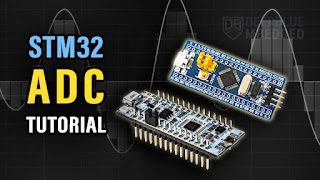How to set MiSTer FPGA for DIN sound?
To set up a MiSTer FPGA for DIN (Deutsches Institut für Normung) sound, you are likely referring to setting up an audio output through a DIN connector on the MiSTer FPGA, which is commonly used for audio and video output in retro gaming systems like the Commodore 64, Atari ST, and Amiga.
Here are the steps to configure the MiSTer FPGA for sound output using a DIN connector:
1. Understanding the MiSTer Audio Configuration
The MiSTer FPGA can output audio through several interfaces, including HDMI, analog audio (3.5mm jack), and digital audio (through the I2S or GPIO pins). To route audio to the DIN connector, you'll need to make sure you're using the correct outputs and potentially configure the MiSTer’s audio settings accordingly.
2. Hardware Setup
DIN Connector for Audio: A DIN connector is a standard multi-pin connector often used for analog or digital audio. Common uses for the DIN connector include audio output from retro computers and consoles.
MiSTer Audio Output: The MiSTer FPGA board provides an audio output through its HDMI, 3.5mm jack, and GPIO pins. To use a DIN connector for audio, you’ll need a DIN-to-3.5mm cable (or other appropriate cables depending on your MiSTer configuration).
To connect a DIN audio cable to your MiSTer:
- Use the HDMI audio output (for digital audio) or the analog 3.5mm jack (for analog audio).
- If you are using analog audio, the 3.5mm jack can connect to a DIN adapter (such as a 5-pin DIN or 8-pin DIN), which will then provide the audio signal for your retro console or other equipment that uses a DIN connection.
3. Configuring MiSTer Audio Settings
- To configure the MiSTer FPGA for sound output through HDMI, the 3.5mm audio jack, or GPIO (depending on your setup), you can modify the
MiSTer.iniconfiguration file and adjust the settings.
Access the MiSTer Configuration Menu:
- Go to the MiSTer FPGA's main menu on your display. You should see options to adjust audio settings.
Select the Audio Output Source:
- Depending on the audio setup you want, select either:
- HDMI Audio for digital audio output through HDMI.
- Analog Audio for the 3.5mm jack.
- GPIO Audio for custom audio outputs via the GPIO pins.
- Depending on the audio setup you want, select either:
Adjust Audio Volume:
- You can adjust the volume output using the MiSTer’s OSD (on-screen display) or through the
MiSTer.iniconfiguration file. The volume can be controlled directly on the MiSTer settings menu.
- You can adjust the volume output using the MiSTer’s OSD (on-screen display) or through the
Editing the
MiSTer.iniFile (for advanced users):- If you prefer, you can manually edit the
MiSTer.iniconfiguration file. This file is located in the root of the SD card used in the MiSTer FPGA. - Open the file and adjust the audio settings:
- For HDMI audio, make sure you have
hdmi_audio=1. - For analog audio (3.5mm jack), set
analog_audio=1.
- For HDMI audio, make sure you have
- If you prefer, you can manually edit the
Example of audio settings in the MiSTer.ini file:
4. Testing the Audio Output
After configuring the MiSTer for audio output through the DIN connector (via HDMI, analog 3.5mm, or GPIO), test the setup by loading a game or system that produces sound. Make sure that the audio plays correctly through the DIN connector.
5. Troubleshooting
If you experience issues with the sound output:
- Double-check your cables and DIN adapters to ensure they are wired correctly.
- Verify that you have the correct audio output selected in the MiSTer configuration.
- Ensure that the volume is turned up and that the MiSTer’s audio settings are correctly configured.
6. Optional: Use MiSTer FPGA with Sound Cards or External DAC
If you want higher-quality audio or specific audio features (e.g., specific retro systems like the Amiga), you can also connect an external sound card or Digital-to-Analog Converter (DAC) to the MiSTer GPIO pins for enhanced audio output.
Conclusion
To set up a MiSTer FPGA for DIN sound, ensure the following:
- Hardware setup: Connect the MiSTer’s 3.5mm audio out or HDMI audio out to a DIN connector.
- Audio settings: Choose the correct audio output in the MiSTer configuration menu or the
MiSTer.inifile (analog or HDMI audio). - Test the sound by playing audio or video output from the MiSTer.
With the right configuration and cables, you can easily output audio through a DIN connector for your retro audio system.




评论
发表评论